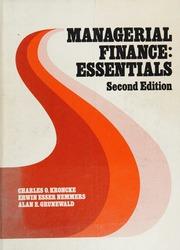We know the prices and payoffs for securities 1 and 2 and they are represented as follows: Security 1 2 Market Price Today $110 $130 Cash Flow In One Year Weak Economy Strong Economy $0 $250 $250 $0 a. What is the risk-free interest rate? b. Consider a risk-free security that has a payoff in one year of $2,750. i. How many units of each of securities 1 and 2 would be needed to replicate this risk-free security? ii. Based on part b.i), what is the market price today of this risk-free security? iii. Based on part a), what is the market price today of this risk-free security? c. Consider a security that has a payoff in one year of $2,750 if the economy is weak and $5,500 if the economy is strong. b. Consider a risk-free security that has a payoff in one year of $2,750, 1. How many units of each of securities 1 and 2 would be needed to replicate this risk-free security? II. Based on part b.l), what is the market price today of this risk-free security? iii. Based on part a), what is the market price today of this risk-free security? c. Consider a security that has a payoff in one year of $2,750 if the economy is weak and $5,500 if the economy is strong. 1. How many units of each of securities 1 and 2 would be needed to replicate this security? il. Based on part c.i), what is the market price today of this security? d. Consider a security that has a payoff in one year of $5,500 if the economy is weak and $2,750 if the economy is strong. 1. How many units of each of securities 1 and 2 would be needed to replicate this security? II. Based on part d.i), what is the market price today of this security? e. Explain the economic reasoning as to why the security in part c) has a lower price than the security in part d). We know the prices and payoffs for securities 1 and 2 and they are represented as follows: Cash Flow In One Year Security Market Price Today Weak Economy Strong Economy 1 $110 $0 $250 2. $130 $250 $0 a. What is the risk-free interest rate? b. Consider a risk-free security that has a payoff in one year of $2,750. 1. How many units of each of securities 1 and 2 would be needed to replicate this risk-free security? II. Based on part b.i), what is the market price today of this risk-free security? ill. Based on part a), what is the market price today of this risk-free security? c. Consider a security that has a payoff in one year of $2.750 if the economy is weak and $5,500 if the economy is strong. 2 1 b. Consider a risk-free security that has a payoff in one year of $2,750. 1. How many units of each of securities 1 and 2 would be needed to replicate this risk-free security? II. Based on part b.i), what is the market price today of this risk-free security? ii. Based on part a), what is the market price today of this risk-free security? c. Consider a security that has a payoff in one year of $2,750 if the economy is weak and $5,500 if the economy is strong. i. How many units of each of securities 1 and 2 would be needed to replicate this security? ii. Based on part c.i), what is the market price today of this security? d. Consider a security that has a payoff in one year of $5,500 if the economy is weak and $2,750 if the economy is strong. 1. How many units of each of securities 1 and 2 would be needed to replicate this security? II. Based on part d.), what is the market price today of this security? e. Explain the economic reasoning as to why the security in part c) has a lower price than the security in part d). ei a










